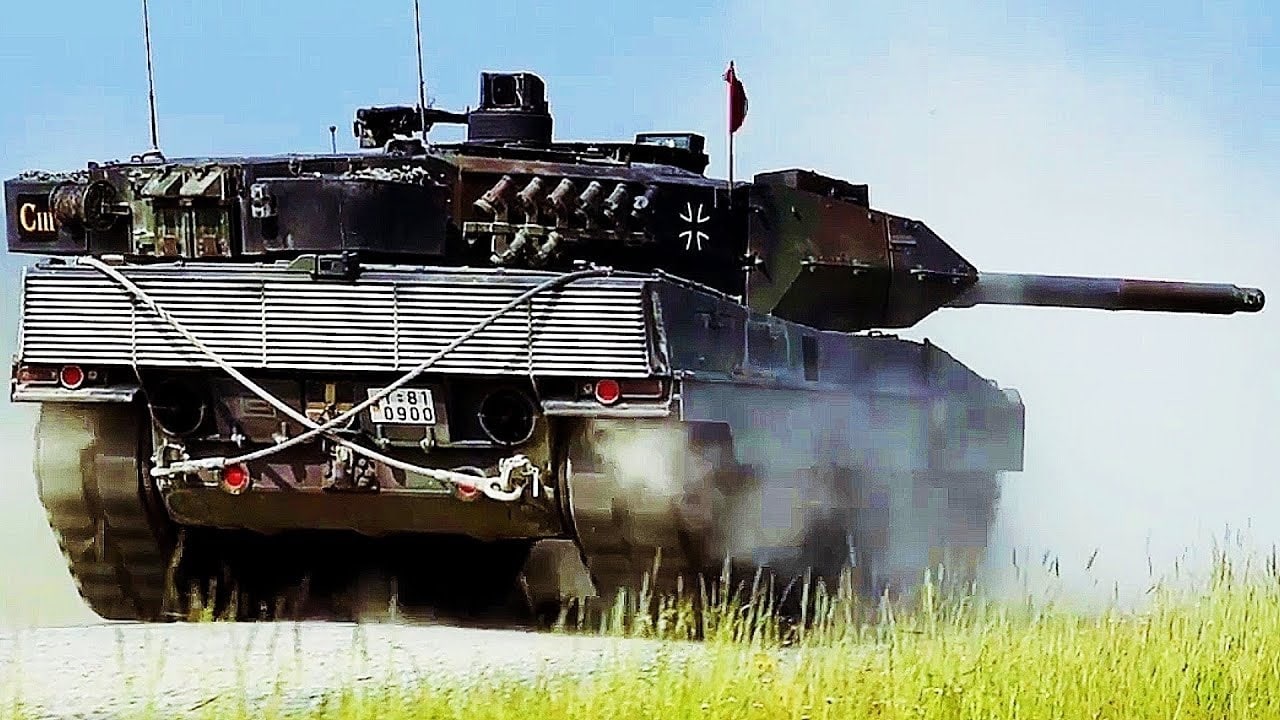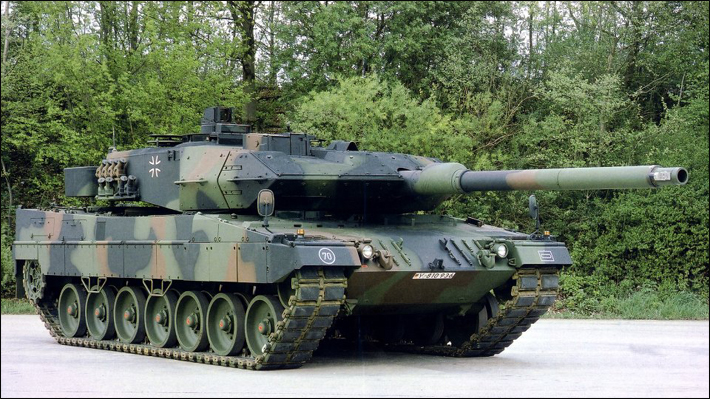The Leopard 2 is a classic tank that is a big part of NATO. While it might not be the most modern or sophisticated tank, it would give Russia a run for its money if the Leopard 2 was ever forced to take on Moscow in a fight:
The German military has a longstanding tradition of naming its tanks for predatory big cats. The WWII Wehrmacht had the Panther and the much feared Tiger. (FYI, though there was indeed that aforementioned Panther tank, there is a common misconception that the German word Panzer means “panther,” when in fact it simply means “tank”). The Panzer III Maus (“Mouse”) was a rather inauspicious exception to the rule, in terms of both moniker and performance.

Fast-forward to the present day, and the post-WWII Bundeswehr has continued the fighting feline tradition, first with the Leopard 1 and now the Leopard 2 main battle tank. So then, let’s take a longer-lasting look at the latter Leopard (Jawohl for the alliteration).
Leopard Legacy
The Leopard 2 traces her design origins back to 1971 and officially entered then-West Germany’s service (wow, has it really already 32 years since German reunification?) in 1979. As you dear readers have undoubtedly deduced already, this MBT was the direct successor to the Leopard I, which was produced from 1965 to 1984 and served as Cold ധąɾ Deutschland‘s first tank designed and built in West Germany.
Manufactured by Krauss-Maffei Wegmann GmBH (KMW for short) in Munich, roughly 3,600 of these armored beasts have been built thus far.
The most current variant of the tank is the Leopard 2A6. It hosts a crew of four — (commander, gunner, loader and driver — and that crew is protected by multilayer spaced armor with a thickness of 1,500 millimeters (59 inches) at its strongest point.

The tank is 9.97 meters (32.7 feet) in length, 3 meters (9.8 feet) in height, 3.75 meters (12.3 meters) in width, and bears a combat weight of 60,100 kilograms (132,497 pounds). Top speed as 68 kph (42 mph) forward and 31 kph (19 mph) in reverse.
Primary armament is a Rheinmetall Rh-120 L/55 120mm main gun, whilst secondary armament consists of one 7.62×51 mm MG3A1 coaxial machine gun, one 7.62 x 51 mm MG3 anti-aircraft machine gun, and two groups of six 76 mm smoke grenade dispensers.
The Leopards Pounce Upon Their Prey
The Leopard 2 was first “blooded” in combat during the 1999 Kosovo campaign known as Operation Allied Force. As described by Joint-Forces.Com columnist Carl Schulze:
“On 26 June 1999, a battle tank deployed at a checkpoint in the Orahovac area fired four warning shots with its 120 mm Rh-120 L/55 smoothbore gun when unrest broke out in the village. This gunfire pacified the situation immediately. So far this has been the only time a German Army Leopard 2 MBT fired its 120mm smoothbore gun in anger.”

From there, the Leopard 2 saw combat in Afghanistan in the hands of the Canadian Forces in support of the International Security Assistance Force (ISAF), whereupon the tank developed a reputation for near-indestructibility in the face of Taliban IEDs.
In one instance, an anonymous Canadian officer even sent a personal thank-you note (Dankeschön note?) to the German government for the tank saving his life and that of his crew (with the worst injury being a broken hip suffered by the driver): “My crew stumbled upon an (improvised explosive device) and made history as the first (crew) to test the (Leopard 2A6) M-packet. It worked as it should.”
Leopard 2 Loses Some Luster
However, the Leopard’s aura of invincibility has been both literally and figuratively blasted away in Syria. As noted by Slobodan Lekic in a January 2017 Stars and Stripes article:
“The reputation of Germany’s vaunted Leopard 2 tank, which forms the mainstay of NATO’s armored forces, has taken a pounding in battles with Islamic State militants in Syria. At least 10 of the 60-ton main battle tanks have been destroyed during a Turkish attempt to recapture the strategically important northern town of al-Bab, located just 15 miles south of the Turkish border, media reports have said.”

In fairness, it didn’t help that the Turkish Leopards weren’t fitted with explosive reactive armor or active protection systems to block incoming rounds. Moreover, as Ralf Rath, head of the Panzermuseum in Munster, was quoted as saying in that same Stars and Stripes article, “Contrary to common perceptions, tanks are no individual fighters. (T)anks always need infantry alongside that can protect their vulnerable flanks.”
Leopards Lumber On…But Not in Ukraine
That Syrian setback notwithstanding, the Leopard 2 soldiers on with several nations’ armies, including Austria, Denmark, Finland, Greece, the Netherlands, Turkey, Spain, Sweden, and Switzerland. There has even been some talk about Spain donating some of its Leopards to Ukraine to battle Russia.





